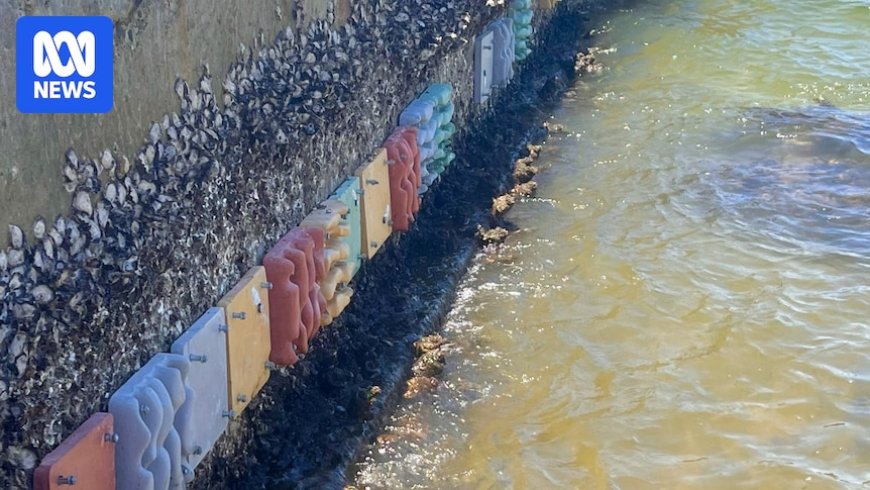Colorful Concrete Panels in Sydney Harbour Aim to Boost Marine Life
Scientists from Macquarie University have conducted an experiment attaching red, green, yellow, and grey concrete squares to seawalls in Sydney Harbour to attract marine biodiversity. The study found that the colored tiles influenced the growth of different invertebrates compared to traditional grey concrete walls. This low-cost design tweak aims to revive marine ecosystems by incorporating natural colors into artificial environments.

Scientists believe colourful panels may be the simple solution to reviving marine biodiversity lost to 'grey homogenous ecosystems'.
Researchers from Macquarie University attached red, green, yellow and grey concrete squares to seawalls in Sydney Harbour to mimic the colours of natural shorelines.
The year-long experiment found the coloured tiles were able to influence different invertebrates like algae and barnacles to grow on them, compared to grey concrete walls which currently dominate many coastlines.
It is also a low-cost design tweak, neurobiologist Laura Ryan said.
Dr Ryan, who co-authored the study, was inspired to 'think about how animals see the world' after she noticed the harbour's bland embankment walls and pylons.
'Something that was obvious to me is that also a lot of the colour is missing,' she said.
'When we change an environment from its natural condition into a more artificial one, we tend to lose a lot of our natural colour.'
With this in mind, Dr Ryan and her team made hundreds of concrete tiles in their backyards using coloured oxide to reflect pigments found in natural landscapes, like sandstone.
The panels were then secured to seawalls at varying tide heights, with researchers observing them every few months.
Over time, they found the red panels proved to be the most popular with green algae and barnacles, while brown algae chose to settle on the green tiles.
Despite the squares becoming covered in marine growth and being grazed on by fish, the original colour still influenced where larvae settled.
'We put cages on some of the panels which stopped the fish from grazing … the idea was to be able to test if the differences were due to camouflage, and what we found that when fish grazed it really didn't affect the colour and who settled where,' Dr Ryan said.
'It has the potential to repair some of the losses that we see because we are having these grey homogenous ecosystems.'
The study has since been expanded, with more tiles placed on concrete walls around Botany Bay in Sydney's south.
Researchers hope to incorporate the colourful panels with existing technology like the Living Seawalls project, which also seeks to restore marine habitat by installing textured plates with grooves and crevices to replicate natural environments.
'One of the strengths of including colour into things like concrete is that they do last so long in the marine environment so it's a really viable eco-engineering solution,' Dr Ryan said.
'We can design infrastructure with nature in mind and bring back some of these really important sensory cues like colour, to support marine biodiversity and the important ecosystem services they provide.'
According to the source: Australian Broadcasting Corporation.
What's Your Reaction?
 Like
0
Like
0
 Dislike
0
Dislike
0
 Love
0
Love
0
 Funny
0
Funny
0
 Angry
0
Angry
0
 Sad
0
Sad
0
 Wow
0
Wow
0

























































































































































































